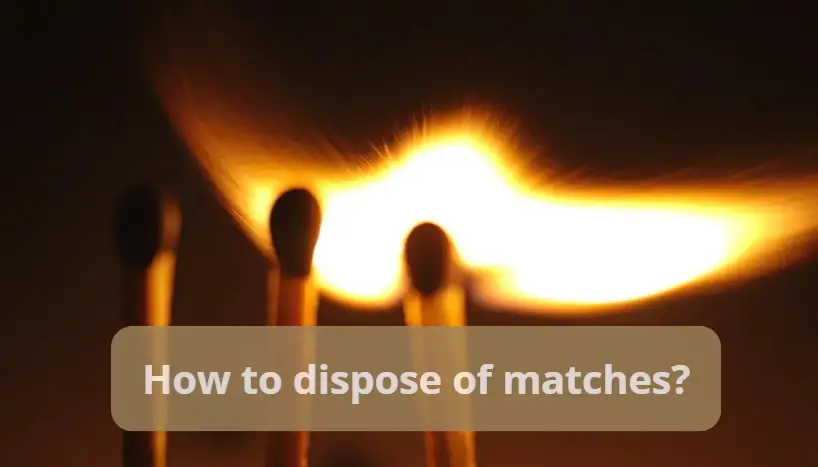How to dispose of matches?
Introduction
Proper disposal of matches is crucial to prevent fire hazards and minimize environmental impact. Whether you’re using them for lighting candles, stoves, or fireplaces, understanding how to dispose of them safely is essential.
Types of Matches
- Wooden Matchsticks
Wooden matchsticks are the most common type of matches, made from small sticks of wood.
- Safety Matches
Safety matches can only ignite when struck against a specially prepared striking surface, reducing accidental ignition.
- Strike-Anywhere Matches
These matches can ignite on any rough surface, making them convenient but slightly more hazardous.
Environmental Impact
- Environmental Considerations
Considering the environmental impact of disposed matches is essential for eco-friendly living.
- Biodegradability of Matchsticks
Wooden matchsticks are biodegradable but still need to be disposed of properly to avoid littering.
- Chemical Components and Their Effects
Matches contain chemicals that, if not disposed of correctly, can contribute to environmental pollution.

Safety Precautions
Safety First
Taking safety precautions is vital when handling used matches.
Handling Used Matches
Ensure matches are fully extinguished before disposal to prevent accidental fires.
Storing Used Matches Safely
Store used matches in a metal container until they can be disposed of properly.
Disposal Methods
Household Recycling
Can You Recycle Matches?
While wooden matchsticks are biodegradable, they are not typically recyclable.
- Preparing Matches for Recycling
Remove any chemical residue before considering recycling options.
Waste Services
- Local Waste Disposal Services
Check with local waste disposal services for guidelines on disposing of matches.
- Guidelines for Match Disposal
Follow specific guidelines to ensure safe and environmentally friendly disposal.
Garbage Disposal
- General Waste Bin
Used matches can generally be disposed of in the general waste bin.
- Separating Matches from Other Waste
Keep used matches separate from other flammable materials.

Safe Disposal Techniques
- Dousing Matches in Water
Douse used matches in water to ensure they are fully extinguished before disposal.
- Using a Metal Container
Store used matches in a metal container to prevent any residual heat from causing a fire.
- Get creative and find new uses for used matches.
DIY Crafts
Use matchsticks in DIY crafts for a fun and sustainable activity.
- Garden Uses
Matchsticks can be repurposed in the garden, such as using them to label plants.

Common Mistakes or What Not to Do
- Avoiding Fire Hazards
Ensure matches are completely extinguished to avoid fire hazards.
- Incorrect Disposal Methods
Never dispose of matches in dry or flammable areas.

READ ALSO: How to Dispose of Oobleck
Conclusion
Proper disposal of matches is essential for safety and environmental health. Safe disposal practices prevent fires and reduce environmental impact.
Encourage others to follow responsible disposal practices for a safer community.
FAQs
How often should I check my local guidelines for match disposal?
It’s a good idea to review local disposal guidelines annually or whenever you notice changes in waste management policies.
Can I compost wooden matches?
Yes, you can compost wooden matches as long as they are free from chemical residues.
Are there any eco-friendly match alternatives?
Consider using reusable lighters or electronic ignition devices as eco-friendly alternatives to traditional matches.
How do I know if a match is fully extinguished?
Ensure the match is cool to the touch and shows no signs of smoldering or smoke.
Can I dispose of matches in a fireplace?
Only dispose of matches in a fireplace if it is safe and they are completely extinguished.
What should I do with large quantities of matches?
If you have large quantities of matches, take them to a local recycling center or follow your community’s guidelines for disposing of flammable items safely.
Is it safe to flush unused matches down the toilet?
No, you should never flush unused matches down the toilet or dispose of them in any other drain. This can cause blockages and potential fire hazards.

